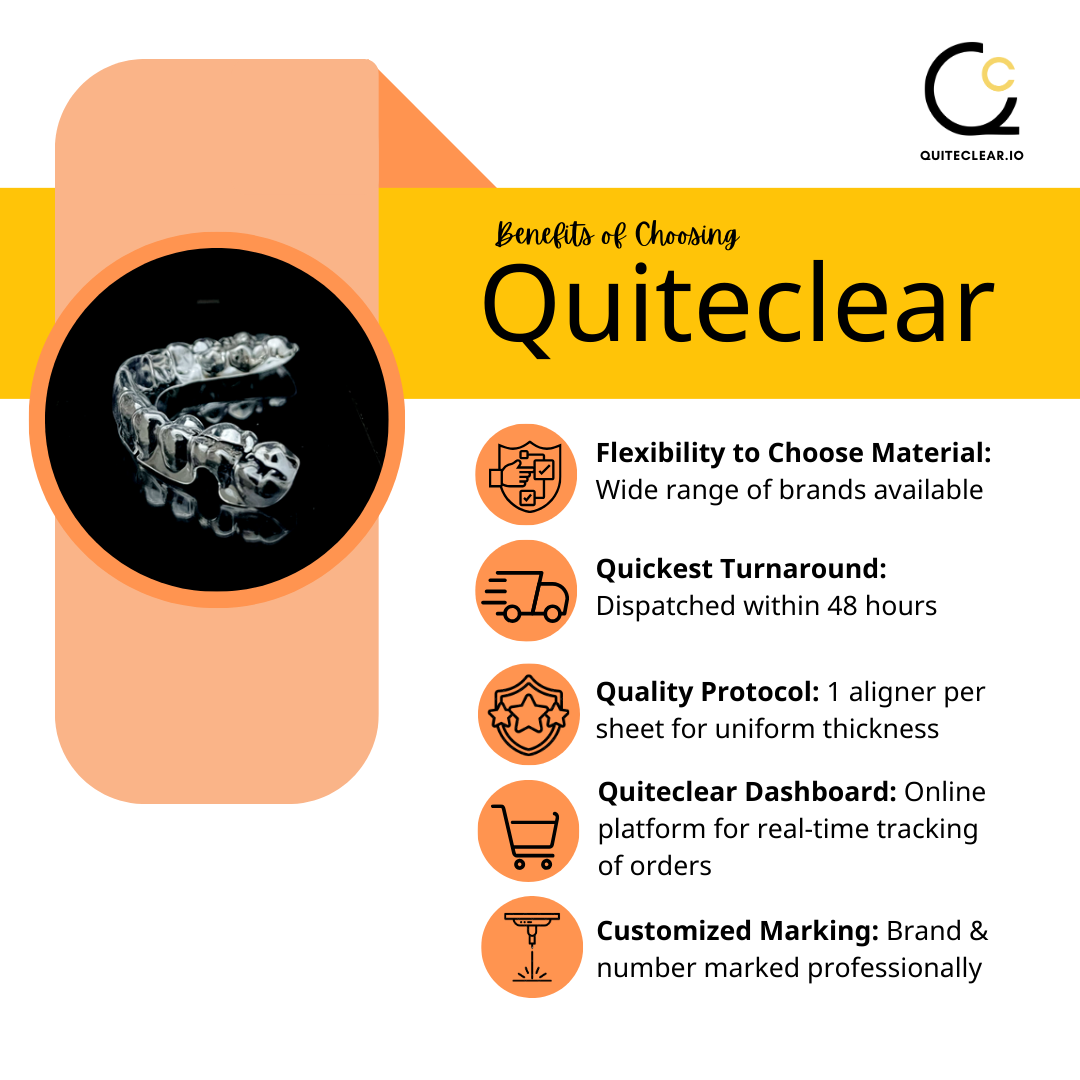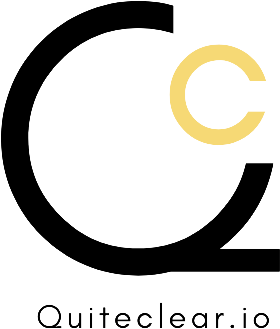Crafting Clear Aligners: A Comprehensive Guide to Selecting the Perfect Materials
What’s the Optimal Material for Crafting Clear Aligners?
This question is a frequent one for us, whether we’re in conversation with a key decision-maker at an aligner company we collaborate with as a private-label clear aligner manufacturer, an orthodontist looking to launch their own aligner brand, or a dental lab seeking to expand their offerings to include clear aligners. The inquiry remains consistent, and so does our response. As a manufacturer of invisible aligners, we maintain a neutral stance when it comes to endorsing a specific brand. Our primary duty is to offer honest advice when sought, based on our extensive knowledge and experience, aligned with the client’s specific needs.
The choice of material that best suits the client’s requirements depends on several crucial factors:
- The complexity of the dental case.
- The patient’s budget.
- The preferences of the treating orthodontist.
At Quiteclear, we employ high-quality raw materials for thermoforming in a range of thicknesses, ensuring tailored force application to the teeth. We proudly offer renowned and highly effective brands such as German-made Scheu & Erkodent, American-made Zendura & Essix, Italian-made Bartmedical Ghost Aligner & Leone SpA, and Indian-made Taglus. Our selection is not limited to the brands mentioned here. We can provide different aligner brand sheets based on availability and in adherence to rigorous quality standards.
We typically recommend thinner materials for crafting aligner templates, which facilitate the attachment bonding process to the teeth. These templates are used once and, as such, don’t require a thickness greater than that of 0.38-0.5mm sheets.
Clear aligners are generally best fabricated in the 0.625 to 0.8mm thickness range. This range has proven successful in numerous aligner treatments, based on both our extensive production experience and recommendations from leading orthodontists in the field.
For retainers, we recommend materials ranging from 0.76mm to 1.5mm. Various brands offer materials that are resistant to staining and cracking over time, making them excellent choices for retainers.
In essence, the choice of aligner materials should be closely aligned with the treatment plan, which can involve varying forces, movements, and retention requirements at different treatment stages.
Common Mistakes to Avoid When Selecting Aligner Materials:
- Failing to consider the complexity of the dental case. Cases with numerous attachments/buttons, typically found in complex cases, necessitate a more flexible material choice to ensure patient comfort during aligner removal. In such cases, we recommend opting for three-layer materials composed of copolyesters, elastomers, and TPE materials. These materials offer flexibility, adapt well to dental anatomy, and are less prone to breakage due to their higher elasticity. Moreover, they exhibit superior clarity compared to other PET-G materials.
- Overcommitting to patients on cost reduction, even for complex cases. While single-layer PET-G sheets are relatively economical and are commonly used in simple to moderate cases, they tend to break sooner in moderate to complex cases. This can lead to alignment issues and discomfort for patients ultimately resultion to patient leaving treatment midway.
- Making material choices based on limited knowledge or being influenced by sales pitches from brand representatives. Some may opt for low-cost, non-branded materials from our neighboring country to cut costs. However, this approach can jeopardize both the orthodontic outcomes and the overall health of the patient due to a lack of information on bio-compatibility and quality control.

The Benefits of Partnering With Quiteclear:
Many of our clients employ a strategic approach when ordering with us. They often find that the complexity of malocclusion typically exists in only one of the dental arches—either the maxillary or mandibular arch. In such cases, clients opt for flexible three-layer branded thermoforming sheets for complex arches and branded PET-G for minor adjustments. This approach allows them to cater to price-sensitive patients while maintaining a high level of patient comfort and satisfaction, resulting in a higher success rate and fewer refinements. Quiteclear stands out by offering this flexibility in choosing from a wide inventory of thermoforming foil materials, a feature much appreciated by our clients.
Whether you’re seeking a clear aligner manufacturing lab in India to establish your own aligner brand or you’re an aligner company considering outsourcing your clear aligner production to a white-label clear aligner manufacturer, we offer the ideal solution for various reasons. Our ability to offer a range of raw materials for thermoforming, along with our exceptional product quality and speedy delivery, sets us apart. We typically ship within 24 to 48 business hours upon receiving your orders.
To explore the options and learn more about creating your own clear aligner brand, let’s connect:
+91 990 997 3333 | connect@quiteclear.io | www.quiteclear.io
